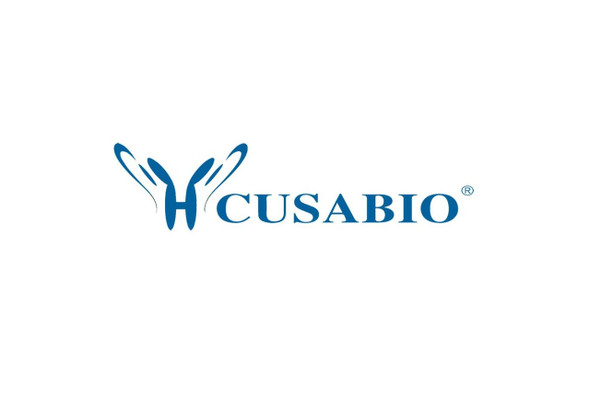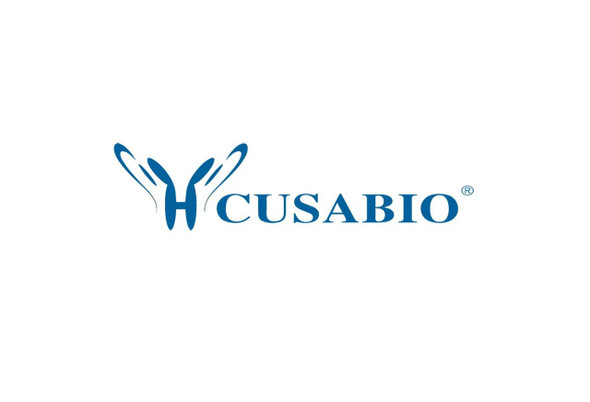Cusabio Active Proteins
Recombinant Mouse Tumor necrosis factor receptor superfamily member 10B (Tnfrsf10b), partial (Active) | CSB-AP005041MO
- SKU:
- CSB-AP005041MO
- Availability:
- 5 to 10 Working Days
Description
Recombinant Mouse Tumor necrosis factor receptor superfamily member 10B (Tnfrsf10b) ,partial (Active) | CSB-AP005041MO | Cusabio
Protein Description: Partial
Alternative Name (s) : Tumor necrosis factor receptor superfamily member 10B/Death receptor 5/MK/CD262/Tnfrsf10b/Dr5/Killer
Gene Names: Tnfrsf10b
Research Areas: Cancer
Species: Mus musculus (Mouse)
Source: Mammalian cell
Tag Info: C-terminal Fc-tagged
Expression Region: 53-177aa
Sequence Info: NPAHNRPAGLQRPEESPSRGPCLAGQYLSEGNCKPCREGIDYTSHSNHSLDSCILCTVCKEDKVVETRCNITTNTVCRCKPGTFEDKDSPEICQSCSNCTDGEEELTSCTPRENRKCVSKTAWAS
Biological Activity: The ED50 as determined by its ability to inhibit TRAIL-mediated cytotoxicity using L‑929 mouse fibroblast cells treated with TRAIL is less than 1 ug/ml.
MW: 40.9 kDa
Purity: Greater than 95% as determined by SDS-PAGE.
Endotoxin: Less than 1.0 EU/µg as determined by LAL method.
Relevance: Mouse tumor necrosis factor receptor superfamily member 10B (TNFRSF10B) is a member of the TNFR family which contains 1 death domain and 3 TNFR-Cys repeats. TNFRSF10B exhibits high structural and functional homology to TRAIL-R1 (DR-4) . TNFRSF10B is highly expressed in heart, lung, lymphocytes, spleen and kidney. In addition, it is regulated by the tumor suppressor p53. TNFRSF10B is the receptor for the cytotoxic ligand TNFSF10/TRAIL. It promotes the activation of NF-kappa-B and is essential for ER stress-induced apoptosis. The adapter molecule FADD recruits caspase-8 to the activated receptor. The resulting death-inducing signaling complex (DISC) performs caspase-8 proteolytic activation which initiates the subsequent cascade of caspases mediating apoptosis.
PubMed ID:
Notes: Repeated freezing and thawing is not recommended. Store working aliquots at 4℃ for up to one week.
Function: Receptor for the cytotoxic ligand TNFSF10/TRAIL. The adapter molecule FADD recruits caspase-8 to the activated receptor. The resulting death-inducing signaling complex (DISC) performs caspase-8 proteolytic activation which initiates the subsequent cascade of caspases (aspartate-specific cysteine proteases) mediating apoptosis. Promotes the activation of NF-kappa-B. Essential for ER stress-induced apoptosis.
Involvement in disease:
Subcellular Location: Membrane, Single-pass type I membrane protein
Protein Families:
Tissue Specificity: Highly expressed in heart, lung and kidney.
Paythway:
Form: Lyophilized powder
Buffer: Lyophilized from a 0.2 μm filtered 20 mM PB, 150 mM NaCl, pH 7.4
Reconstitution: We recommend that this vial be briefly centrifuged prior to opening to bring the contents to the bottom. Please reconstitute protein in deionized sterile water to a concentration of 0.1-1.0 mg/mL.We recommend to add 5-50% of glycerol (final concentration) and aliquot for long-term storage at -20℃/-80℃. Our default final concentration of glycerol is 50%. Customers could use it as reference.
Uniprot ID: Q9QZM4
Uniprot Entry Name:
HGNC Database Link: N/A
UniGene Database Link: UniGene
KEGG Database Link: KEGG
STRING Database Link: STRING
OMIM Database Link: N/A









